Convert Curl To Python
Introduction to cURL and Python
1. What is cURL?
cURL, short for “Client URL”, is a command-line tool and a library for making HTTP, HTTPS, and FTP requests. It is widely used in various operating systems and programming languages to perform tasks such as downloading files, sending API requests, and testing web applications. cURL provides a simple and flexible interface for interacting with web servers.
2. Introduction to Python
Python is a high-level programming language known for its simplicity and readability. It has gained popularity in web development and API integration due to its vast collection of libraries and modules. Python provides powerful tools for making HTTP requests and interacting with web services.
Converting cURL Commands to Python Code
3. Understanding cURL commands
A typical cURL command consists of several components, including the HTTP method, URL, headers, cookies, request body, and various options and flags. By understanding the structure of a cURL command, it becomes easier to convert it into equivalent Python code.
4. Python libraries for working with cURL
There are several libraries available in Python for making HTTP requests, each with its own set of features and functionalities. Three popular choices are Requests, urllib, and pycurl. These libraries simplify the process of sending requests, handling responses, and managing session state.
5. Converting cURL options and flags to Python
When converting cURL commands to Python code, it is important to understand how to handle different options and flags. This includes handling headers, cookies, authentication, data serialization, and custom request methods. Each library mentioned earlier provides different ways to handle these options.
Examples and Best Practices
6. Example: Converting a simple cURL command to Python
To provide a practical demonstration, we will convert a basic cURL command to Python code. We will go step-by-step, showing the equivalent Python code and highlighting the differences. This example will serve as a starting point for understanding the conversion process.
7. Best practices for converting complex cURL commands
Converting more complex and intricate cURL commands requires careful consideration. We will discuss strategies for handling multipart requests, JSON input, file uploads, and other scenarios. Additionally, we will provide tips for optimizing code readability and maintainability when converting cURL commands to Python code.
Conclusion and Additional Resources
8. Conclusion and final thoughts
In conclusion, understanding how to convert cURL commands to Python code is essential for developers working with web services and APIs. Python’s extensive libraries and modules provide powerful tools for working with HTTP requests. By understanding the structure of cURL commands and the features of Python libraries, developers can seamlessly transition between the two.
9. Additional resources for learning and further exploration
To further enhance your understanding of converting cURL commands to Python code, we recommend exploring the following resources:
– Recommended books: “Python Requests Essentials” by Rakesh Vidya Chandra and “Python Web Scraping – Second Edition” by Katharine Jarmul and Richard Lawson.
– Tutorials and online resources: Websites like Real Python, GeeksforGeeks, and Django documentation offer comprehensive tutorials and guides on Python and cURL.
– Communities and forums: Engage with the Python community on platforms like Stack Overflow and Reddit to seek help and share knowledge.
By utilizing these resources, developers can deepen their understanding of cURL and Python, and expand their capabilities in web development and API integration.
FAQs:
1. How can I convert a cURL command to an HTTP request online?
There are several online tools available that allow you to convert a cURL command to an HTTP request. Some popular options include Curl to HTTP Request Converter and Curl Online.
2. Is there a way to convert cURL commands to axios code?
Yes, there are tools and libraries available that can convert cURL commands to axios code. Curlconverter, for example, provides a Python package called `curlconverter` that converts cURL commands to Python code, which can then be easily adapted to work with axios.
3. How can I make a POST request using Python’s Requests library, similar to cURL’s POST command?
To make a POST request using Python’s Requests library, you can use the `requests.post()` method and provide the necessary parameters such as the URL, headers, and data. For example: `response = requests.post(url, headers=headers, data=data)`. This would be equivalent to a cURL command using the `-X POST` flag.
4. What format should I use to convert cURL to Python code?
There is no strict format for converting cURL commands to Python code. However, it is recommended to use Python’s Requests library for simplicity and ease of use. Additionally, examining the structure of the cURL command and understanding its components will help in converting it accurately to Python code.
How To Transform Curl Into Code
Keywords searched by users: convert curl to python Convert curl to HTTP request online, Curl online, cURL to axios, cURL Python, Curlconverter python xyz, Curl post python requests, Python curl POST, Format curl
Categories: Top 23 Convert Curl To Python
See more here: nhanvietluanvan.com
Convert Curl To Http Request Online
Curl, short for “Client URL,” is a command-line tool that allows developers to interact with various protocols, including HTTP, FTP, and LDAP. It is widely used for making requests to web servers and retrieving data. One common challenge that developers often face is transforming a Curl command into an HTTP request format. Fortunately, there are several online tools available that simplify this process, enabling developers to convert Curl to HTTP requests seamlessly. This article will delve into the details of converting Curl to HTTP request online and provide insights into its benefits and usage.
Why Convert Curl to HTTP Request Online?
Converting Curl commands to HTTP request format is essential, especially in scenarios where developers need to integrate Curl commands into their applications or use Curl commands as a starting point to experiment with various HTTP libraries or frameworks. By converting Curl to HTTP request format, developers can save time and effort in rewriting code and focus on other important aspects of their programming tasks. Online tools dedicated to this conversion process offer developers a quick and convenient way to accomplish this.
Using an online tool to convert Curl to HTTP request format eliminates the need for manual conversion, reducing the chances of human error and making the process more efficient. These tools automatically interpret the Curl command provided by the developer and generate a corresponding HTTP request code, which can be easily copied and used in any programming language or framework.
Benefits of Online Curl Conversion Tools
1. Time Efficiency: Online conversion tools significantly reduce the time required to convert Curl commands to HTTP request format. As developers no longer need to manually rewrite the code, they can dedicate more time to other crucial aspects of their projects.
2. Accuracy: These tools ensure greater accuracy in the transformation process, minimizing the potential for errors that may occur during manual conversion. By translating Curl commands to HTTP request format automatically, the risk of syntax or logic errors is greatly reduced.
3. Adaptability: Online Curl conversion tools generate HTTP request code, which can be seamlessly integrated into various programming languages and frameworks. This adaptability offers developers the freedom to choose the most suitable programming environment for their projects.
4. Learning Opportunity: By converting Curl commands to HTTP request format online, developers can gain valuable insights into the structure and syntax of HTTP requests. This understanding can enhance their ability to work with web APIs and explore different programming languages and frameworks.
Using an Online Curl Conversion Tool
To convert Curl commands to HTTP request format online, follow these simple steps:
1. Copy the Curl command you want to convert. The command should start with “curl” followed by various options and arguments.
2. Open your preferred online Curl conversion tool in a web browser.
3. Paste the Curl command into the input field provided on the tool’s website.
4. Click on the “Convert” or “Translate” button.
5. The online tool will process the Curl command and generate the equivalent HTTP request code.
6. Copy the generated HTTP request code and use it in your application.
FAQs
Q1. Are online Curl conversion tools free to use?
Yes, most online Curl conversion tools are available free of charge. However, some tools may offer additional premium features for a fee.
Q2. Can online Curl conversion tools handle complex Curl commands?
Online Curl conversion tools can handle a wide range of Curl commands, including those with multiple options, headers, and request bodies. However, it is important to check the tool’s limitations and compatibility with specific features or Curl options.
Q3. Which programming languages and frameworks are supported by online Curl conversion tools?
Most online Curl conversion tools generate HTTP request code in a format that is compatible with popular programming languages like Python, JavaScript, Ruby, and PHP. Additionally, the generated code can be used with various frameworks, such as Flask, Express.js, Rails, and Laravel.
Q4. Can online Curl conversion tools handle authentication and cookies?
Yes, online Curl conversion tools are capable of handling authentication methods, such as Basic Auth and OAuth. They can also include cookies in the generated HTTP request code.
Q5. Is there any risk involved in using online Curl conversion tools?
While online Curl conversion tools are generally safe to use, it is essential to exercise caution when sharing sensitive Curl commands that may contain API keys or access tokens. Always review the tool’s privacy policy and ensure the commands are not stored or accessed by the tool provider.
In conclusion, converting Curl commands to HTTP request format online offers developers a quick and efficient way to streamline their coding efforts. With the ability to generate compatible HTTP request code for various programming languages and frameworks, these online tools prove to be invaluable assets in bridging the gap between Curl and HTTP. By saving time, ensuring accuracy, and providing adaptability, developers can focus on crafting robust applications and exploring new horizons in web development.
Curl Online
The Basics of Curl
—————————
Curl, short for “Client URL,” was first released in 1997 by Daniel Stenberg. It was initially created as a command-line tool for transferring data with URLs but has evolved to support numerous protocols including HTTP, HTTPS, FTP, and more. Curl operates on most major operating systems including Windows, macOS, and Linux, making it easily accessible to developers and system administrators across platforms.
Making Requests with Curl
—————————–
Curl’s primary function is to make requests to various URLs and provide the corresponding responses. This can include sending HTTP requests to servers, uploading and downloading files, or accessing resources via different protocols. With Curl, developers can easily interact with APIs, test endpoints, and retrieve valuable information from web servers.
Curl follows a simple syntax for making requests. By using the `curl` command followed by the target URL, Curl will initiate an HTTP GET request by default. For example, running `curl https://example.com` will send a GET request to the specified URL and display the server’s response on the console.
However, Curl offers a plethora of command-line options that allow developers to customize requests according to their needs. These options enable authentication, specify custom headers, set request types (such as POST or PUT), and more. By exploring Curl’s extensive documentation, developers can leverage these options to create complex requests and perform thorough testing.
Downloading and Uploading Files
————————————-
One of the common use cases for Curl is downloading files from the internet. With the `-O` option, developers can quickly download a file by specifying its URL. For example, running `curl -O https://example.com/file.pdf` will download the file and save it locally in the current directory with the same file name.
Additionally, Curl’s versatility extends to uploading files as well. By using the `-F` option and specifying the file path, developers can easily submit files to a server. This feature is particularly useful for automating file transfers, interacting with cloud storage services, or integrating with other tools.
Curl for API Testing
—————————-
API testing is a crucial aspect of modern web development, and Curl provides an effective way to test and debug APIs. With Curl, developers can simulate HTTP requests and observe the server’s response. This allows for easy verification of API endpoints, authentication, and payload data.
Developers can customize Curl’s requests with different HTTP methods, headers, and data payloads. This flexibility enables thorough testing of APIs, ensuring that they function as expected and meet the required specifications. From simple GET requests to complex multi-step requests, Curl’s versatility makes it an essential tool in API development and integration processes.
Curl’s FAQ Section:
—————————-
1. Is Curl a free tool?
Yes, Curl is an open-source tool released under the MIT license, which means it is free to use, modify, and distribute.
2. How do I install Curl?
Curl comes pre-installed on most Linux distributions and macOS. For Windows, you can download and install it from the official Curl website (https://curl.se/). Detailed instructions are provided for each operating system.
3. Can I use Curl with programming languages?
Absolutely! Curl has bindings available for many programming languages, including but not limited to Python, PHP, Ruby, and Java. This allows developers to integrate Curl functionality directly into their scripts or applications.
4. Can Curl handle authentication?
Yes, Curl supports various authentication methods, including basic authentication (using `-u` option), token-based authentication (using custom headers), and OAuth.
5. Can Curl handle HTTPS requests?
Yes, Curl fully supports HTTPS requests. It verifies SSL certificates by default, ensuring secure communication between client and server.
6. Can Curl handle multipart/form-data requests?
Yes, Curl can handle multipart/form-data requests using the `-F` option to specify files to upload. This is particularly useful for submitting files while testing APIs or interacting with web applications.
7. Can Curl follow redirects?
Yes, by default, Curl automatically follows HTTP redirects. However, you can control redirection behavior using the `-L` option.
8. Can Curl handle cookies?
Yes, Curl has built-in cookie support. It can store and send cookies between requests, making it possible to maintain session information.
9. Can Curl perform parallel requests?
Yes, Curl supports parallel requests through the use of multiple instances or by leveraging libraries that allow parallel processing, such as `xargs`.
Conclusion
——————
Curl is an incredibly versatile and powerful tool for transferring data to and from servers, making HTTP requests, and accessing resources via URLs. Its command-line interface allows developers and system administrators to easily interact with APIs, test endpoints, and automate file transfers. With its extensive capabilities and flexible customization options, Curl has become an indispensable tool in web development and system administration.
Curl To Axios
In the vast world of web development, sending HTTP requests and handling responses is an essential part of building modern applications. Two widely-used tools for making these requests are cURL and Axios. While cURL has been a longstanding choice for developers, Axios has gained significant popularity in recent times. In this article, we will explore the differences between cURL and Axios, discussing their features, benefits, and how to migrate from cURL to Axios seamlessly.
Exploring cURL:
cURL, short for “Client for URLs,” is a command-line tool that allows developers to send HTTP requests from the command line or include them in scripts. It supports multiple protocols, including HTTP, HTTPS, FTP, and more. cURL is built-in to most Unix-based systems, making it highly accessible.
One of the primary advantages of cURL is its extensive feature set. It supports various authentication methods, allows for cookie handling, and enables file transfer. It also allows developers to set custom headers, handle different request types (GET, POST, PUT, DELETE), and execute multiple requests concurrently.
Using cURL is relatively straightforward. One can simply open a terminal and provide the desired options, URLs, and parameters. For example, to send a GET request to a specific URL, one can use the following command:
“`
curl https://api.example.com/data
“`
Introducing Axios:
Axios, on the other hand, is a popular JavaScript library for making HTTP requests from a browser or Node.js. It provides a simple and intuitive API, making it a preferred choice for many developers. Axios offers features that simplify request handling, such as interceptors for handling request and response data, automatic JSON parsing, and request cancellation.
One notable advantage of Axios is its promise-based approach, which allows for elegant asynchronous code utilizing async/await or promises chaining. It also provides built-in support for handling progress events during uploads or downloads. As a JavaScript library, Axios can be easily integrated into projects through package managers like npm or Yarn.
Migrating from cURL to Axios:
If you have been using cURL and are considering migrating to Axios, here are some key differences to keep in mind:
1. Syntax changes: As cURL is a command-line tool, its syntax differs from the JavaScript-based Axios. In Axios, you use functions and methods to create and handle requests.
2. Asynchronous requests: cURL primarily works with synchronous requests, whereas Axios inherently handles asynchronous requests.
3. URL encoding: Unlike cURL, which automatically URL encodes parameters, Axios expects URL encoding to be handled explicitly.
4. Response handling: Axios automatically parses JSON responses, simplifying the process. On the other hand, cURL typically requires manual parsing of the response data.
To migrate from cURL to Axios, start by rewriting your cURL commands in JavaScript using Axios syntax. Identify the headers, parameters, and request type used in cURL and convert them accordingly. The Axios documentation provides detailed examples and guidelines for each scenario, facilitating the transition.
FAQs:
Q: Can I use Axios in both client-side and server-side applications?
A: Yes, Axios is versatile and can be used in both client-side JavaScript (e.g., in web browsers) and server-side environments (e.g., Node.js).
Q: Are there any performance differences between cURL and Axios?
A: Performance differences are subjective and depend on various factors such as network latency, server load, and hardware. However, both cURL and Axios offer efficient ways to handle HTTP requests.
Q: Does migrating to Axios require additional dependencies?
A: Axios relies on the underlying JavaScript runtime, but it does not require any additional dependencies. It can be installed via a package manager like npm or Yarn.
Q: How can I handle authentication in Axios?
A: Axios provides options to set custom headers, including authentication headers. You can include the necessary credentials or tokens in the request headers to handle authentication.
Q: Can I migrate partial code from cURL to Axios, or do I need to rewrite the entire request?
A: It is possible to migrate portions of code from cURL to Axios, but rewriting the request according to Axios syntax is necessary. This ensures compatibility and appropriate usage of Axios functionality.
Conclusion:
Both cURL and Axios serve as robust tools for making HTTP requests, catering to different needs and preferences. While cURL shines in command-line scenarios, Axios provides a more developer-friendly experience with its JavaScript API and versatile features. Understanding the differences and migrating code from cURL to Axios effectively ensures smooth transitions in your development workflow, enhancing the overall efficiency and maintainability of your projects.
Images related to the topic convert curl to python

Found 44 images related to convert curl to python theme





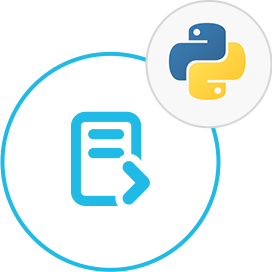




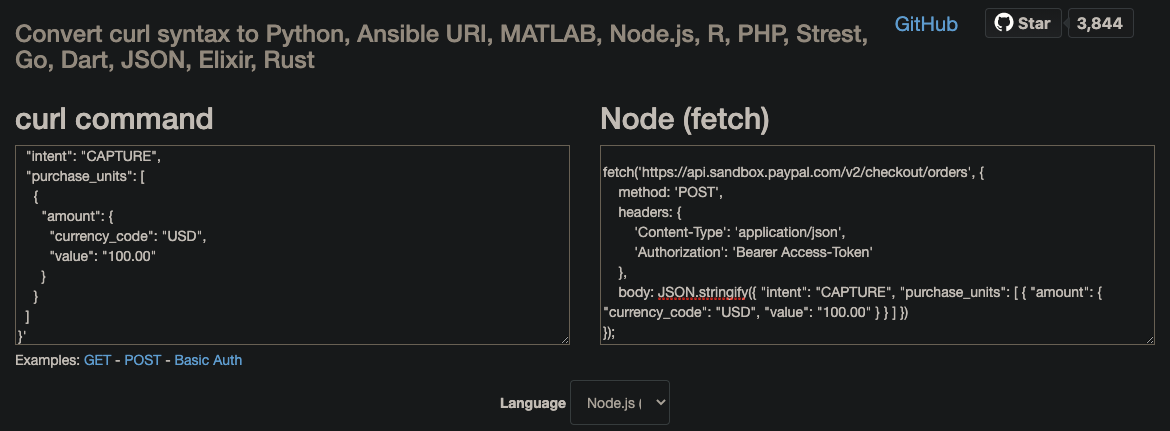
![Basic web scraping [Python] EP.2 ดึงข้อมูลเว็บที่ต้อง login ก่อนแบบง่ายๆ - YouTube Basic Web Scraping [Python] Ep.2 ดึงข้อมูลเว็บที่ต้อง Login ก่อนแบบง่ายๆ - Youtube](https://i.ytimg.com/vi/-jai466Yc58/sddefault.jpg)

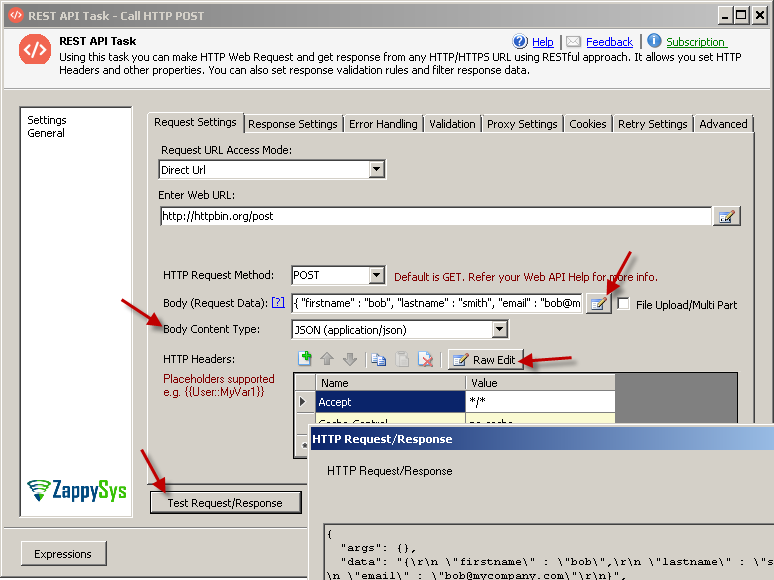
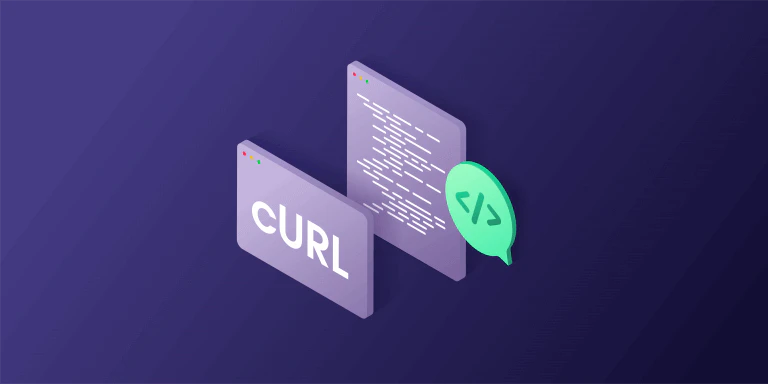

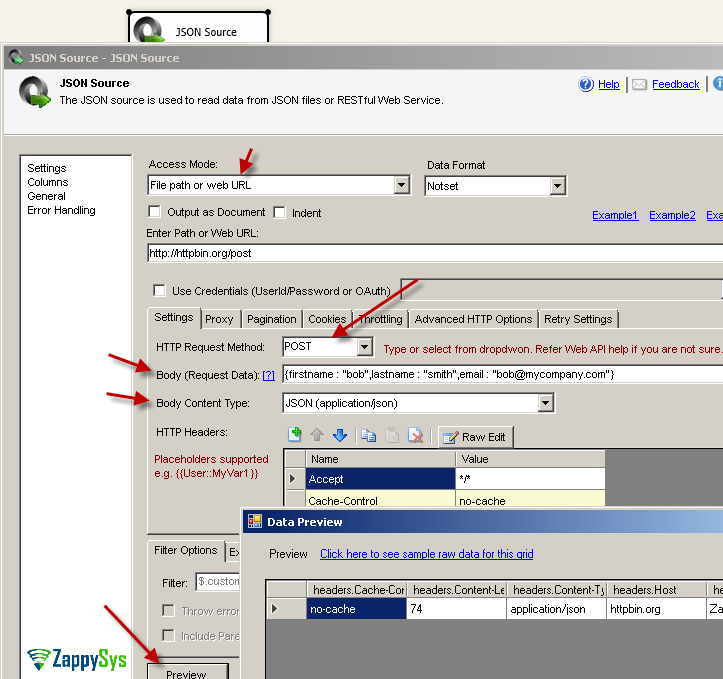




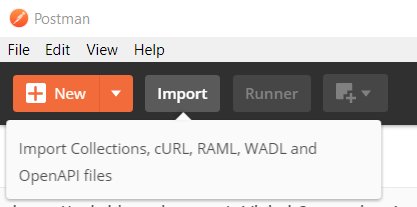




Article link: convert curl to python.
Learn more about the topic convert curl to python.
- Convert curl commands to code
- How to convert Curl to Python request? – ReqBin
- Convert cURL command syntax to Python requests, Ansible …
- Curl to Python Converter – Formatter
- How to convert CURL to python requests and vice versa
- Converting Curl to Python Requests – Pierian Training
- How to convert Curl to Python request code? – Stack Overflow
- curl2pyreqs – PyPI
See more: https://nhanvietluanvan.com/luat-hoc/